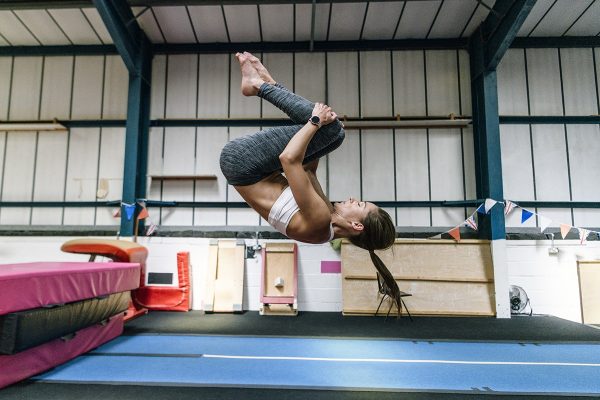
Strength Training for Stronger Bones: Protecting Against Osteoporosis and Bone Loss
Bone health is a critical component of overall well-being, particularly as we age. Osteoporosis, a condition characterized by weakened bones and an increased risk of fractures, affects millions of people worldwide. While diet and genetics play roles in bone density, strength training has emerged as a highly effective strategy for building and maintaining strong bones. This blog post explores how strength training can protect against osteoporosis and bone loss, the science behind it, and practical strategies for incorporating it into your routine.
Understanding Osteoporosis and Bone Loss
Osteoporosis is a progressive condition where bones become brittle and fragile due to low bone mass and deterioration of bone tissue (National Osteoporosis Foundation, 2021). Bone loss occurs naturally with age, but certain factors such as a sedentary lifestyle, inadequate calcium and vitamin D intake, and hormonal changes can accelerate this process. Women, especially postmenopausal women, are at a higher risk due to decreased estrogen levels, which play a vital role in maintaining bone density (Rizzoli et al., 2021).
The Role of Strength Training in Bone Health
Strength training, also known as resistance training, involves exercises that make muscles work against an external force. This can include lifting weights, using resistance bands, or performing body-weight exercises like squats and push-ups. Research has shown that strength training provides mechanical stress on bones, stimulating bone-forming cells known as osteoblasts, which leads to increased bone mineral density (Hong & Kim, 2018).
One of the key principles behind this process is Wolff’s Law, which states that bones adapt to the loads placed upon them. When subjected to resistance training, bones respond by increasing their strength and density to accommodate the stress. This is particularly beneficial for individuals at risk of osteoporosis, as it helps slow down bone loss and may even lead to bone growth (Kelley et al., 2021).
Benefits of Strength Training for Bone Health
1. Increases Bone Density: Strength training has been shown to significantly improve bone mineral density, particularly in weight-bearing bones such as the hips, spine, and wrists (Zhao et al., 2021).
2. Reduces Fracture Risk: Stronger bones mean a lower risk of fractures, a common consequence of osteoporosis.
3. Enhances Muscle Strength and Balance: Improved muscle strength helps with stability and coordination, reducing the risk of falls that could lead to fractures (Nelson et al., 2019).
4. Supports Joint Health: Strength training helps maintain joint integrity by improving the strength of surrounding muscles and ligaments, reducing the stress on bones and preventing injuries.
5. Improves Overall Mobility and Independence: Strength training enhances functional movement, allowing individuals to maintain an active lifestyle and perform daily activities with ease.
Best Strength Training Exercises for Bone Health
To maximize bone-strengthening benefits, focus on weight-bearing and resistance exercises. To help build core strength and joint stability in the lower body, movements like squats, lunges, and deadlifts can be beneficial. For upper body strengthening, movements like push-ups or planks are suitable. As you progress, adding weights to exercise will help challenge your strength and build muscle to help support your bones.
How to Incorporate Strength Training into Your Routine
1. Start Slow and Progress Gradually: If you’re new to strength training, begin with light weights and gradually increase resistance as your strength improves.
2. Train at Least Two to Three Times per Week: Consistency is key to seeing results. Aim for at least two sessions per week to build and maintain bone strength.
3. Focus on Proper Form: Using the correct technique is crucial to prevent injuries and maximize benefits.
4. Combine Strength Training with Weight-Bearing Cardio: Activities like walking, jogging, or dancing complement resistance training by further strengthening bones.
5. Consult a Professional: If you have osteoporosis or other medical conditions, working with a fitness professional or physiotherapist can ensure that your training program is safe and effective.
Conclusion
Strength training is a powerful tool for preventing osteoporosis and bone loss. By incorporating resistance exercises into your fitness routine, you can enhance bone density, reduce the risk of fractures, and improve overall mobility. Whether you are young and looking to build strong bones or older and aiming to maintain bone health, strength training is an investment in long-term well-being. Start incorporating these exercises today and take proactive steps towards stronger, healthier bones.
How We Can Help
Working with exercise professionals, such as kinesiologists or certified trainers, can ensure that you execute exercises with proper form and alignment. Professional guidance reduces injury risk and maximizes effectiveness.
At CARESPACE, we are focused on a holistic approach to health and helping clients like YOU reach your individual health goals. Whether you’re new to exercise or looking to optimize your routine, our team of kinesiologists and fitness trainers can help you incorporate flexibility, range of motion training, and other physical activities into your lifestyle safely and effectively.
Call or book online today to learn more about how we can support you in reaching your health and fitness goals!
To review the full range of services, visit fitness training at CARESPACE.
References
Hong, A. R., & Kim, S. W. (2018). Effects of resistance exercise on bone health. Endocrinology and Metabolism, 33(4), 435-444.
Kelley, G. A., Kelley, K. S., & Kohrt, W. M. (2021). Exercise and bone mineral density in postmenopausal women: A meta-analysis of randomized controlled trials. American Journal of Health Promotion, 35(1), 40-50.
National Osteoporosis Foundation. (2021). What is osteoporosis and what causes it? Retrieved from https://www.nof.org
Nelson, M. E., Rejeski, W. J., Blair, S. N., Duncan, P. W., Judge, J. O., King, A. C., & Castaneda-Sceppa, C. (2019). Physical activity and public health in older adults: Recommendation from the American College of Sports Medicine and the American Heart Association. Medicine & Science in Sports & Exercise, 51(5), 1002-1010.
Rizzoli, R., Biver, E., & Bonjour, J. P. (2021). Risk factors for osteoporosis and fractures in elderly women. Best Practice & Research Clinical Endocrinology & Metabolism, 35(2), 101541.
Zhao, R., Zhao, M., & Xu, Z. (2021). The effects of different intensities of resistance training on bone mineral density and bone turnover markers in postmenopausal women. Osteoporosis International, 32(5), 901-911.




